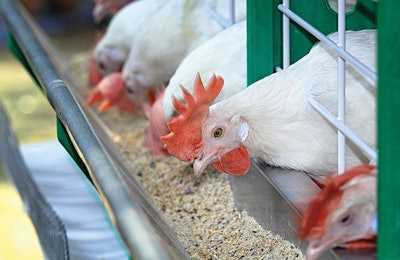
Alternative ingredients offer cost savings when used properly and at the right amount.
The majority of diets for poultry and pigs are formulated with corn or wheat as the primary energy sources, and soybean meal or rapeseed meal as the main protein sources.
At times, alternative energy or protein sources become available. They are priced so that they appear less expensive, or they are being marketed at large enough volume; often a combination of the two. It might also be the case that the major staple ingredients, those mentioned above, become temporarily unavailable or priced too high to be used profitably.
There is, therefore, a need to know how to formulate standard diets with different ingredients. To this end, we need to focus on two aspects: maximum inclusion rates and shadow pricing.
Maximum inclusion rates
There are no ingredients without problems. Those we consider as standard are neither problem-free nor unavailable for further improvements. We are just used to them, and we have come to accept animal performance standards around their usage in feed formulas.
When we introduce novel ingredients in a standard formula, inevitably we also introduce new problems. Such is the case with anti-nutritional factors (ANF), an umbrella definition that includes all undesirable compounds found in ingredients that reduce animal performance in myriad ways.
Experienced nutritionists know these ANF and their effects on animals, and they know what maximum inclusion rates to impose on feed formulation. For example, cottonseed meal, a protein source, should not be used more than 5% in a broiler pre-starter feed, but it can be used up to 20% in a gestating sow feed, and so on. These figures are available in publicly accessible literature, but it is best to use the analytical experience of a qualified nutritionist.
It is also possible that maximum inclusion restraints are imposed not because of too many ANF, but because of physical characteristics. For example, a piglet feed made with whey protein concentrate (a source of high-quality proteins) can use as much as possible of this ingredient (depending on price) if the feed is in meal form. But, if the feed is going to be pelleted, using more than 10% of whey protein concentrate will make the pellets too hard for piglets to chew them. Or, molasses can be used up to 20% in a similar feed, but if the feed plant cannot mix more than 4-6% (most common), then we have an upper limit imposed by simple engineering.
Again, an experienced nutritionist will know such details and will discuss them with the feed plant manager before deciding how much of a novel ingredient can be used at a certain feed and facility.
Shadow pricing
Most modern high-end feed formulation software packages have the shadow-pricing function. In simple terms, first, you enter a new ingredient in the nutrient database, and you impose any needed maximum restraint. Perhaps even a minimum is necessary if the feed plant cannot handle micro-quantities.
Finally, you let the computer run the algorithm until a feasible solution emerges. If the preferred novel ingredient is priced favorably, it will be incorporated in the new solution. If the price is reasonable, then the maximum allowed level will be used.
In most cases, an intermediate level will be used because some nutrient will be limiting or something similar in nature. But, when the alternative ingredient is rejected, it can be seen in a separate area along with this shadow price. This price is the maximum price at which this ingredient will enter the specific formulation. Changing nutrient specifications of the formula can also cause a rejected ingredient to enter the formula, but this is somewhat unconventional.
Quick evaluation of alternative ingredients
Most often, there is not enough time or interest to go through the paces of entering all required nutrient specifications of a novel ingredient in the software database. With more elaborate formulation systems, this can be rather tedious and labor intensive. And most feed formulation packages do not come pre-loaded with each and every possible feed ingredient. So, there is often the need for a quick assessment of a novel ingredient before passing on to the formulation department.
Experienced nutritionists can do this by calculating and comparing the cost of the most limiting nutrient based on which the feed formulation software will first balance the formula. For example, if is plenty of sorghum available, then the question becomes, “Does it pay to use it instead of corn?” as both are good energy sources. They provide many other nutrients, but energy is the point around which formulation will pivot to decide which is cheaper.
So, one can quickly calculate the cost per kcal or MJ energy (using the appropriate energy system) and compare the two values. The energy values of each ingredient are easily found in many books in tabular form. If it was, say, sunflower meal, then the nutritionist would most likely calculate the cost per gram of lysine or methionine and compare the two.
This exercise is not an accurate method, by any measurement, but it is being used more often than not. The final decision is taken after the complete nutrient profile of the new ingredient is evaluated thoroughly through the least-cost formulation method using the relevant feed formulation software.


















